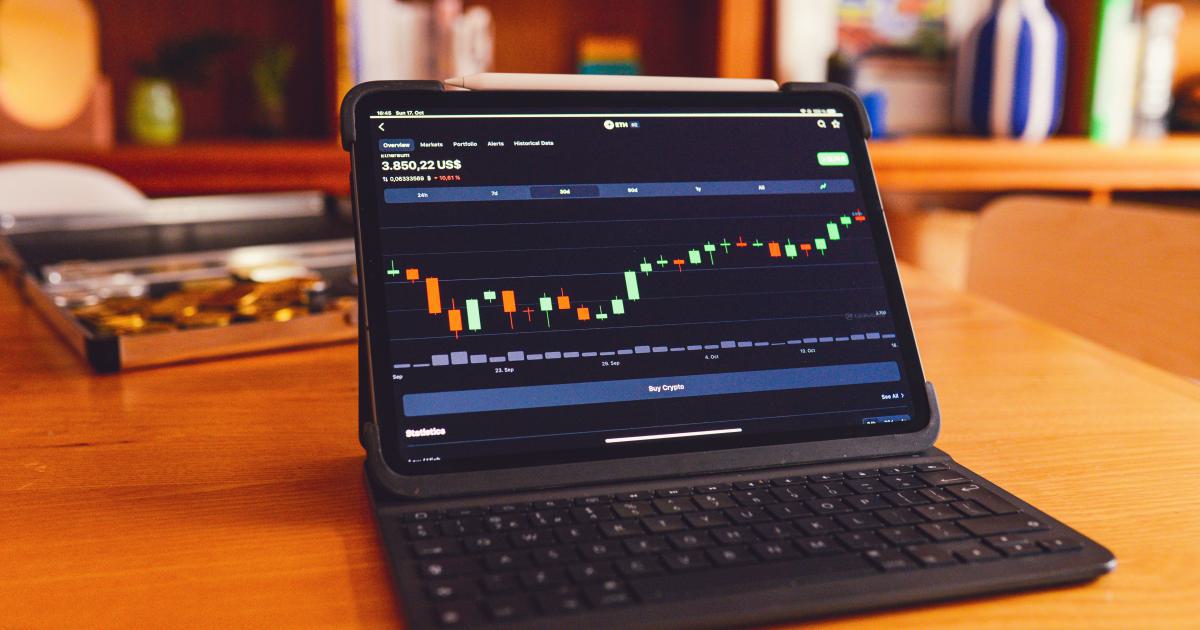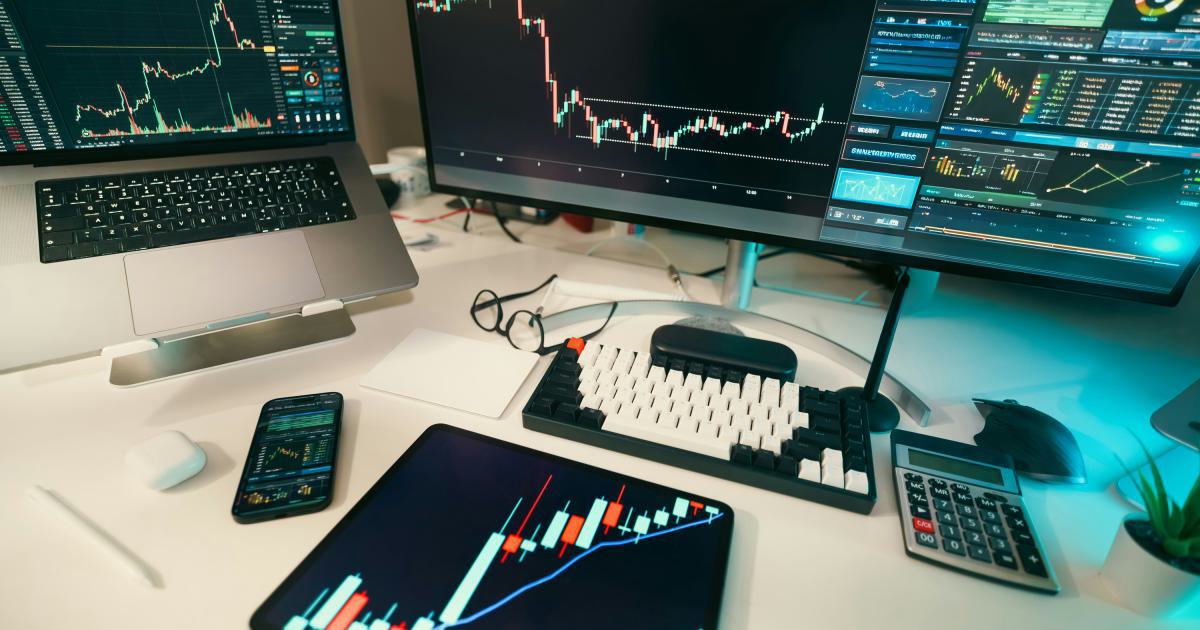What Factors Impact Accurate Backtesting Results?

Backtesting is an essential process for validating trading strategies by simulating their performance on historical data to achieve accurate backtesting results. In modern finance and algorithmic trading, ensuring that the backtesting outcomes are reliable is paramount, as inaccuracies can lead to misguided decisions and significant financial losses. The pursuit of accurate backtesting results is fraught with challenges ranging from data quality issues to model overfitting, each of which can critically affect outcomes. This article dives deep into the multifaceted factors that impact accurate backtesting results, offering thorough explanations, real-world examples, and actionable solutions to help both novice and experienced traders improve their strategy evaluations.
Introduction to Backtesting
Backtesting refers to the simulation of a trading strategy using historical market data to assess its past performance. By replicating the behavior of a system in previous market conditions, traders can glean insights into potential future performance and understand a strategy’s vulnerabilities. However, several factors impact the accuracy of backtesting, and overlooking even one can distort the final output.
Backtesting is not a perfect predictor of future performance, but it is a critical tool to vet strategies. The process involves coding the trading rule, selecting a suitable data range, applying the rule, and then comparing the simulated performance against actual historical outcomes. Achieving accurate backtesting results requires attention to many variables, including appropriate data selection, realistic simulation of market conditions, and robust statistical analysis.
The Importance of Accurate Backtesting Results
Accurate backtesting results are crucial because they provide the foundation for making informed trading decisions. Errors in backtesting can stem from several sources, including poor data quality, unrealistic assumptions, parameter overfitting, and software limitations. If these factors are not properly addressed, the resulting backtest may not reflect the true risk and reward profile of the strategy.
Why Accuracy Matters in Backtesting?
When a trading strategy is incorrectly validated, traders risk implementing a system that can collapse under real market conditions. A simulated strategy might look profitable in historical data due to data snooping, look-ahead bias, or survivorship bias, but fail during live trading when market conditions differ drastically. Ensuring accurate backtesting results is integral to building robust, resilient systems that have a higher likelihood of success in real trading environments.
Common Pitfalls Affecting Accuracy
- Data anomalies and incomplete records
- Incorrect assumptions in simulation algorithms
- Ignoring transaction costs and slippage
- Overfitting to historical data
Each of these pitfalls will be discussed in detail in the following sections to illustrate how they individually and collectively degrade the integrity of backtesting.

Data Quality and Its Impact on Backtesting
One of the primary factors affecting accurate backtesting results is the quality of the data used. Data forms the backbone of any backtesting exercise, and issues such as errors, inconsistencies, or outdated information can lead to misleading outcomes.
The Role of Quality Data in Backtesting
Data must be clean, comprehensive, and representative of the underlying market activity to deliver trustworthy results. Historical data can be plagued by various problems:
- Missing data points due to market outages or recording errors.
- Survivorship bias, which occurs when only successful entities are included in the dataset.
- Inaccurate pricing or timing issues, where the recorded prices do not reflect the true trades.
- Errors introduced by corporate actions such as dividends, stock splits, or mergers.
For example, if dividends are not correctly factored into a backtest for a dividend-paying stock, the simulated performance might be significantly understated. Similarly, omitting transaction costs such as commissions and slippage can create a false sense of profitability.
Sources of Data Issues
Data issues often arise from both the vendor and the technology used to collect and store the data. Third-party data providers might have discrepancies due to differences in their data collection methodologies. Moreover, historical datasets might not include adjustments for events like stock splits or dividend payments, leading to results that do not mirror the true market behavior.
Real-world case studies have shown that a simple misalignment in dates or incorrect corporate action adjustments can turn a seemingly profitable strategy into a loss-making one when implemented live. Therefore, establishing rigorous data validation protocols is essential for achieving accurate backtesting results.
Ensuring Data Integrity
There are multiple ways to ensure data integrity:
Use reputable data sources and cross-verify with multiple providers.
Regularly update datasets to include recent market changes and corporate actions.
Implement robust data cleaning techniques to handle missing or erroneous values.
Adjust historical data for dividends, splits, and other corporate actions to maintain their economic relevance.
By diligently cleaning and validating data, traders can significantly improve the reliability of their backtesting outcomes.
Model and Parameter Selection
The construction of a trading strategy involves choosing models and parameters that capture market behaviors accurately. However, selecting the appropriate model and parameters is a delicate process that directly influences the outcome of backtesting.
Understanding the Impact of Parameter Sensitivity
Parameter sensitivity is a phenomenon where slight changes in the model’s parameters can result in significant differences in backtest outcomes. This is especially true for strategies that rely heavily on technical indicators or complex algorithms. For instance, using a moving average crossover strategy involves selecting the periods for the moving averages. Minor adjustments in these periods can lead to substantial variations in the number of signals triggered and, ultimately, the profitability of the strategy.
In many cases, what appears to be a robust strategy can be a victim of overfitting—a scenario where the parameters are too finely tuned to historical data, making them less adaptable to future market conditions. Overfitting leads to accurate backtesting results in the historical period but poor out-of-sample performance.
Balancing Complexity and Robustness
Finding the right balance between a model's complexity and its robustness is crucial. While a complex model may capture niche market patterns, it might also incorporate noise, leading to a system that struggles in different market regimes. On the other hand, an overly simplistic model might miss crucial market dynamics.
To mitigate the risk of excessive sensitivity to parameters, traders should consider the following approaches:
- Perform sensitivity analysis: Evaluate how small variations in parameters affect the strategy's performance.
- Use out-of-sample data: Reserve a portion of historical data that is not used during the model development phase to test the model’s performance.
- Apply cross-validation techniques: Use methods such as k-fold cross-validation to ensure the model performs reliably across different segments of historical data.
- Simplify models: Avoid unnecessarily complicated models that may improve backtest performance at the cost of generalizability.
Example: Parameter Sensitivity in Moving Average Strategies
Consider a trading strategy that uses a pair of moving averages—a shorter period moving average (SMA) and a longer period moving average (LMA). If a trader runs backtests with different combinations of SMA and LMA periods, the results can vary widely. For certain parameter combinations, the backtest might show high returns, but those same combinations might work poorly in different market conditions. This example underscores the need to scrutinize parameter sensitivity carefully while striving for accurate backtesting results.
Dealing with Overfitting and Curve-Fitting
Overfitting and curve-fitting are common challenges in creating reliable trading strategies. Overfitting occurs when a model is excessively complex and tailored to historical data, capturing noise rather than the underlying market signal. Curve-fitting, a closely related problem, refers to the adaptation of a model to past data trends that may not persist in the future.
Recognizing the Signs of Overfitting
A telltale sign of overfitting is a model that performs exceptionally well in a backtest but fails during live trading. Such models might have been optimized so thoroughly for the historical data that they lack the flexibility to adapt to new market conditions. Some indicators that overfitting has occurred include:
- Extremely high historical returns that seem too good to be true.
- Irregular or infrequent trades that appear to exploit specific data anomalies.
- A significant drop in performance when applied to validation datasets.
Avoiding overfitting is necessary for achieving accurate backtesting results. While it might be tempting to tweak the parameters endlessly until the backtest produces the desired performance, traders must resist this urge.
Techniques to Avoid Overfitting
Several techniques can help in mitigating overfitting:
Split Data: Use distinct training and testing datasets.
Limit Parameters: Avoid over-complicating models with too many parameters.
Use Regularization: Techniques like ridge regression or LASSO help penalize excessive complexity.
Walk-Forward Testing: Continuously update and test the model on new data segments to verify its performance.
By focusing on methods to prevent overfitting, traders can ensure that their backtesting results are more likely to translate into successful live trading strategies.
Real-World Example of Overfitting Pitfalls
Consider a scenario where a trader developed a sophisticated algorithmic strategy that delivered remarkable returns during backtesting. Upon closer inspection, it was discovered that the strategy was overly reliant on minor historical events that were unlikely to recur. When implemented in real-time, small deviations in market behavior quickly nullified the strategy's edge, resulting in losses. This real-world example highlights the critical importance of resisting overfitting to achieve accurate backtesting results.
Accounting for Transaction Costs and Market Frictions
Transaction costs and market frictions are critical aspects often neglected in backtests. Without incorporating these factors, the backtest can overestimate the profitability of a trading strategy.
Understanding Transaction Costs
Transaction costs include brokers' commissions, bid-ask spreads, slippage, and taxes. These costs can have a substantial cumulative effect, especially for high-frequency trading strategies or those with frequent rebalancing.
For example, a strategy that appears profitable by making a large number of trades in a backtest might falter when real transaction costs are factored in. This discrepancy can lead traders to overestimate the efficiency of their systems.
Market Frictions and Their Effects
Market frictions such as liquidity constraints and market impact can significantly affect the performance of a strategy. In illiquid markets, executing large orders might move prices against the trader, leading to poorer execution prices and further deteriorating returns.
To simulate these effects accurately, traders should:
- Incorporate realistic transaction cost models in the backtesting engine.
- Model slippage based on historical volatility and market conditions.
- Simulate the impact of liquidity by adjusting the trading volume based on market depth.
Each of these factors is vital for aligning the backtest with real trading conditions.
Actionable Steps for Including Frictions
Traders can adopt several measures to ensure their backtests account for transaction costs and market frictions:
Gather historical data on bid-ask spreads and use it to simulate slippage.
Model transaction costs based on the type of asset and the trading frequency.
Factor in potential liquidity constraints, particularly during periods of market stress, to assess the resilience of the strategy.
By including these non-ideal market conditions in the backtest, traders can come closer to achieving accurate backtesting results that are reflective of potential real-world challenges.

Software Limitations and Technical Considerations
Backtesting reliability also hinges on the accuracy of the software tools employed. Software limitations, computational errors, and inconsistencies in algorithm implementation can all contribute to deviations in backtesting outcomes.
Common Software Pitfalls
Several technical issues can affect backtesting accuracy:
- Coding errors and bugs in the backtesting engine.
- Time frame misalignments, where the resolution of historical data does not match the model’s requirements.
- Failure to replicate the real-world trading environment accurately.
- Improper handling of time zones, particularly relevant for strategies spanning multiple markets.
For instance, if a backtesting engine inadvertently assumes continuous 24-hour trading for a market that has defined trading hours, the resulting simulation will not account for overnight gaps or the impact of market closures. Such discrepancies can lead to overly optimistic performance metrics.
Ensuring Technical Robustness
To overcome technical challenges, it is important to:
Regularly validate and test the backtesting software using known benchmarks and standard metrics.
Compare the software’s outputs with manual calculations or alternative platforms.
Ensure that the simulation environment closely mimics live trading conditions, including discrete trading sessions, realistic latency, and order execution protocols.
Utilizing robust software that is well-tested and verified can drastically improve the likelihood of achieving accurate backtesting results.
Hardware and Computational Limitations
For strategies that require extensive computation, such as Monte Carlo simulations or complex optimization routines, the underlying hardware can also be a limiting factor. Inadequate computational power might force compromises in simulation resolution or the number of iterations used, thereby affecting the precision of outcomes.
Traders should consider investing in high-performance computing solutions or cloud-based platforms to ensure that computational limitations do not undermine the reliability of backtests.
Market Conditions and External Factors
Market conditions fluctuate constantly, and historical data is subject to periods of high volatility, stability, or regime changes. Recognizing and adjusting for these external factors is crucial for obtaining accurate backtesting results.
Regime Shifts and Structural Breaks
Market regime shifts, where the underlying dynamics of price movements change significantly over time, pose a challenge to backtesting. For instance, a period of economic boom might exhibit entirely different volatility characteristics compared to a recessionary period. Backtests that include these shifts without acknowledging their impact might misinterpret the performance of a strategy.
Structural breaks can occur due to changes in economic policy, geopolitical events, or technological innovations. When a significant structural break occurs, historical data prior to the break may not be representative of the future market environment. Traders must, therefore, be cautious when extrapolating backtest results across varying market regimes.
Incorporating Macro-Economic and Geopolitical Events
Macroeconomic indicators, such as interest rate changes, inflation data, and geopolitical tensions, can have profound effects on market behavior. A strategy that performs well during periods of low volatility might falter during times of economic uncertainty.
To account for these variables, consider the following:
Segment historical data into sub-periods defined by different market regimes.
Test strategy performance separately for each period to assess robustness.
Incorporate macroeconomic data into the simulation to evaluate how the strategy would perform under different economic conditions.
Scenario Analysis and Stress Testing
In addition to standard backtesting, traders should perform scenario analysis and stress testing to simulate the impact of extreme market events. Stress testing, by forcing the model through adverse conditions, can uncover vulnerabilities that are typically hidden in traditional backtests.
By combining normal backtesting with rigorous scenario analysis, traders can develop strategies that are resilient in various market conditions, ultimately contributing to more accurate backtesting results.
Risk Management and Position Sizing
Effective risk management is the cornerstone of any successful trading system. The way a strategy manages risk and sizes positions can significantly impact backtesting performance and its translation to live trading.
The Importance of Risk Metrics
Risk metrics such as the Sharpe ratio, maximum drawdown, and volatility are often used to evaluate a strategy's performance. However, these metrics need to be interpreted correctly within the context of the backtest. For instance, a high Sharpe ratio might be a result of overfitting, whereas a lower ratio might reveal more realistic performance estimates.
Accurate backtesting that incorporates risk management is essential for:
- Assessing the true risk-adjusted returns of a strategy.
- Preventing the deployment of capital into systems that are volatile or susceptible to significant drawdowns.
- Ensuring that position sizing methods account for worst-case scenarios.
Position Sizing And Money Management
Position sizing—the determination of trade size relative to overall capital—is another critical factor affecting backtesting. A strategy that appears effective on paper may fail when real-life constraints, such as liquidity and capital limitations, are introduced. Different approaches, such as fixed fractional position sizing or volatility-based sizing, can yield vastly different outcomes in both simulation and live trading.
Traders should implement robust money management rules within their backtesting frameworks to mimic realistic trading environments. This includes:
Incorporating margin requirements and leverage.
Simulating the impact of multiple concurrent positions on overall capital.
Adjusting for risk concentrations when trades overlap in time.
By embedding these considerations into the backtest, one can achieve a more accurate representation of how the strategy would perform in a live setting.
Best Practices for Achieving Accurate Backtesting Results
Achieving accurate backtesting results is a multi-faceted challenge that requires attention to detail across data quality, model selection, technical implementation, and market conditions. Here are some best practices to help ensure reliable outcomes:
Comprehensive Data Handling
- Source data from verified and reputable providers.
- Regularly update and cleanse data sets to remove anomalies.
- Adjust historical data for dividends, splits, and other corporate actions to maintain consistency.
Robust Model Development
- Keep models as simple as possible while capturing essential market dynamics.
- Perform sensitivity analyses to understand how parameter changes impact performance.
- Avoid overfitting by using walk-forward analysis and cross-validation.
Realistic Simulation of Market Conditions
- Incorporate realistic estimates for transaction costs, slippage, and liquidity.
- Configure the simulation environment to reflect true market trading sessions.
- Stress-test strategies using scenario analysis to simulate adverse conditions.
Technical Diligence
- Ensure the backtesting engine is thoroughly tested and validated.
- Regularly update and maintain the software to minimize bugs and discrepancies.
- Use high-performance computing where necessary to accommodate computationally intensive simulations.
Ongoing Evaluation and Adaptation
- Continuously monitor live performance against backtested predictions.
- Update strategies based on emerging market trends and regime shifts.
- Maintain flexibility in the model to adjust to unforeseen market scenarios.
Implementing these best practices will help bridge the gap between theoretical performance and live trading outcomes, leading to backtesting results that are both more accurate and actionable.
Future Trends in Backtesting Methodologies
As financial markets evolve, so too do the methodologies for backtesting. Innovations in data science, machine learning, and computational power are paving the way for more sophisticated and reliable backtesting frameworks.
The Role of Machine Learning
Machine learning models can handle vast datasets and uncover subtle patterns that traditional statistical methods might miss. By leveraging these techniques, traders can develop strategies that adapt dynamically to market conditions. However, the complexity of these models can also lead to overfitting, making it crucial to balance innovation with robustness.
Automation and Real-Time Backtesting
The advent of automated trading systems has necessitated the evolution of real-time backtesting tools. These platforms not only simulate historical performance but also incorporate live data feeds to continuously validate and update strategy performance. The integration of real-time feedback mechanisms is a promising development in the quest for accurate backtesting results.
Increased Computational Capabilities
Advances in hardware performance and cloud computing have drastically improved the feasibility of complex backtesting simulations. Traders now have access to tools that can rapidly process large datasets and perform extensive Monte Carlo simulations, thus enhancing the reliability of their backtest outcomes.
The Integration of Alternative Data
Incorporating alternative data sources such as social media sentiment, economic indicators, and even satellite imagery can provide additional layers of context to backtesting models. As these data sources become more accessible and reliable, they offer opportunities to further refine strategies and improve the accuracy of backtesting results.
Conclusion
Achieving accurate backtesting results is a formidable challenge, but it is undoubtedly crucial for building robust trading strategies. From data quality and model selection to handling transaction costs and technical limitations, each element plays a critical role in shaping the reliability of backtest outcomes. By understanding and addressing these factors, traders can develop strategies that are not only robust in historical simulations but also resilient in real-world market conditions.
Accurate backtesting results form the foundation on which successful trading strategies are built. While no backtest can predict the future with absolute certainty, a meticulous, well-thought-out approach that incorporates rigorous data handling, realistic market simulation, and continuous model validation reduces the gap between simulation and reality. In today's fast-paced financial markets where every decision counts, achieving precision in backtesting is more than just an academic exercise—it is a vital component of effective risk management and strategic planning.
By adopting the best practices discussed in this article and staying abreast of emerging trends in backtesting methodologies, traders can continuously refine their strategies. The journey to improved trading performance involves constant learning, adaptation, and a critical eye for detail. Whether you are a seasoned trader or just starting out, the insights provided here serve as a roadmap to achieving more accurate backtesting results and, ultimately, more consistent trading success.

In summary, the factors impacting accurate backtesting results are multi-dimensional and interconnected. Only by embracing a comprehensive, disciplined, and forward-thinking approach can traders hope to navigate the complex terrain of historical data simulation and build strategies that stand the test of time.
Backtesting remains a crucial step in the development of any trading system. As markets evolve and technologies advance, the methodologies for ensuring reliable backtesting results must also adapt. By continually scrutinizing every aspect—from data quality to model complexity—you can enhance the likelihood that your simulated strategies will perform robustly in live trading environments. Strive to understand the nuances of each factor discussed, and integrate this knowledge into a holistic framework that supports sound trading decisions.
This detailed examination underscores that accurate backtesting results are not merely a product of advanced algorithms but are the outcome of diligent effort across multiple facets of strategy development. As you refine your approach and integrate these insights, you will be better equipped to face the ever-changing dynamics of the markets, ensuring your trading strategies remain viable and effective in the long term.
The journey toward developing foolproof strategies is ongoing, and the insights shared here provide a blueprint for overcoming many of the common pitfalls. With a focus on data integrity, robust modeling, realistic simulation, and comprehensive risk management, achieving accurate backtesting results becomes an attainable objective rather than an elusive goal. Embrace the complexity of backtesting as an opportunity to enhance your trading acumen and build a resilient foundation for future market success.
Happy trading and may your backtesting always lead to accurate, actionable insights!
Unlock Trading Potential with Automated Analysis
Tired of missing opportunities and making suboptimal trading decisions? TrendSpider's cutting-edge platform automates complex technical analysis, saving you time and reducing human error.
With multi-timeframe analysis, dynamic alerts, backtesting, and customizable charting, you'll gain a competitive edge in identifying trends and making informed trades across global markets.
Unleash the Power of Automated Trading Analysis
Are you struggling to keep up with the fast-paced trading world? TrendSpider empowers you with cutting-edge tools for optimal strategy execution.
Our automated technical analysis suite eliminates guesswork, backtests strategies, and delivers real-time alerts, saving you valuable time and effort.


